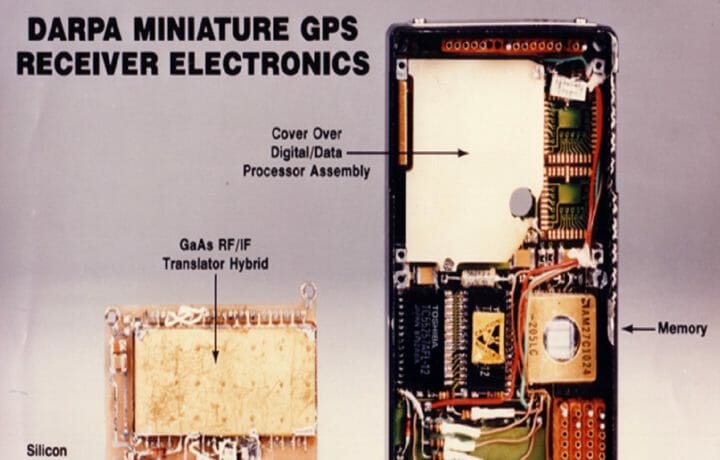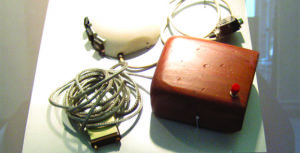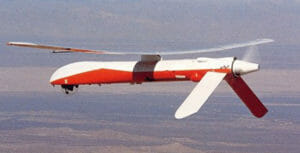They’ve been called the “Mad Scientists” of the Department of Defense. They’ve also been called “the raddest bunch of mega-nerds on the planet.”* Without question, the folks at the Defense Advanced Research Projects Agency (DARPA) have been revolutionizing defense technology for decades.
The agency was commissioned in 1958 by President Eisenhower to advance military technology for the nation – largely in response to the Russian launch of Sputnik. Known then just as “ARPA,” the research agency was often tasked with finding solutions to some of America’s most complex defense and national security challenges. In fact, at a recent event for their new book, retired CIA Chief of Disguise Jonna Mendez revealed how the CIA’s Directorate of Operations leaned on DARPA during the Cold War. When her late husband Tony would receive requests from the CIA brass for an unrealistic gadget they saw on Mission Impossible or James Bond, he would pass the request on to the folks at DARPA.
This agency of creative scientists, inventors, and researchers has not only made incredible advances for America’s defense – like the M16 and paving the way for our victory in the Space Race – they’ve given birth to technologies that have literally changed the world we live in. And when they haven’t invented it themselves, they’ve fostered and funded the researchers who have. Here are just five amazing technologies that we can thank the mad geniuses at DARPA for.
1. The Computer Mouse (1964)
It goes without saying that the computers of the 1960’s looked a whole lot different than those today. The user-focused, touch screen, UX-tailored personal machines of today started out as massive behemoths that took up entire rooms. Unwieldy as they were, DARPA (then “ARPA”) funded an experiment to find better ways for people to interact with computers. Douglas Engelbart of the Stanford Research Institute (now SRI International) invented the computer mouse thanks to DARPA’s funding. This proto-mouse was carved out of wood and had just one button (pictured below).
2. GPS (1983)
Today we all hold geopositioning technology in the palm of our hands with our smartphones. But as technology always does, GPS started out much larger. Its roots were laid with a DARPA-supported Navy submarine-geopositioning system program at the Johns Hopkins University Applied Physics Laboratory in 1973. At that time, the DoD created a joint program office to develop the NAVSTAR Global Positioning System. This created a network of dozens of satellites and ground stations.
Except in order to use this tech, soldiers on the ground had to carry heavy PSN-8 Manpack GPS receivers. As DARPA explains:
“In 1983, in response to a Marine Corps Required Operational Capability to lighten warfighters’ loads, DARPA re-emerged in the GPS-development landscape, focusing on miniaturizing GPS receivers. That effort created a context in which an industry participant in the development process, Rockwell Collins, took the baton to produce a gallium arsenide hybrid chip that allowed for combined analog and digital functionality and the first ‘all-digital’ GPS receivers.”
Obviously this lighterweight technology made its use on the ground for troops much more practical and widespread. Today, GPS is an essential part not only of military operations, but civilian lives across the globe. So on behalf of all of us who can’t find the bathroom without GPS, thank you, DARPA.
3. “Siri” (2002)
If you picked up your phone and said, “Siri, what other awesome things has DARPA given humanity?” she might reply “Me.” Indeed, Siri (along with her friends Bixby, Alexa, and “Hey Google”) all have their origins in DARPA’s Personalized Assistant that Learns (PAL) program. DARPA created cognitive computing systems as a way to make military decision-making more efficient. The agency worked closely with military users on the PAL prototypes and helped integrate them into military systems. As DARPA explains on their Innovation Timeline: “Elements of DARPA’s PAL program, for example, were integrated into the U.S. Army’s Command Post of the Future, which integrates data from different feeds into a single display and today contributes to more timely decisions and coordinated operations on a daily basis around the world. Advances stemming from the agency’s PAL program were applied not only for military users but also to enable voice-based interaction with civilian handheld devices.”
These achievements actually led to the creation of a company called Siri Inc. in 2007, which was later purchased by Apple, who incorporated the PAL tech into their operating systems. Pretty nifty, right?
4. Drones (1988)
In a joint program with the U.S. Navy, DARPA helped fund the first endurance unmanned aerial vehicle (UAV) or drone. The inaugural craft was named Amber (pictured below), which flew for more than 38 straight hours, reaching an altitude of 25,000 feet in 1988. Amber incorporated innovations like digital flight controls, composite materials, microprocessors, and satellite navigation. Amber was the predecessor of today’s UAV’s, which have not only transformed warfare, but have revolutionized how we are able to gather intelligence and perform aerial reconnaissance.
5. The Internet (1969)
And of course, the granddaddy of all famous DARPA inventions: the world wide web. Though many have taken credit for its invention, ARPA research played a central role in launching the “Information Revolution.” Its internet precursor was called “ARPANET,” which laid the foundation of a network of geographically-separated computers sharing digital resources. In 1968, DARPA contracted BBN Technologies to build the first routers, which enabled ARPANET’s initial demonstration in 1969. So for all your internet shopping, Wikipedia searching, and social media chattering, you can thank DARPA. Sorry, Al Gore.
Bonus: If you’re around Arlington, VA, there’s a marker in Rosslyn that the city placed by the old DARPA headquarters at 1400 Wilson Blvd. The plaque commemorates the agency’s work in bringing world-changing technology like this to light.
*By this author






